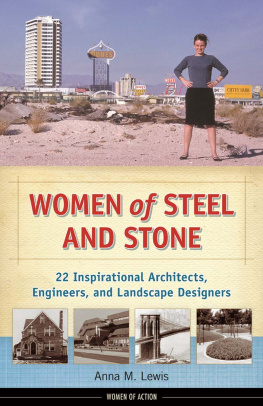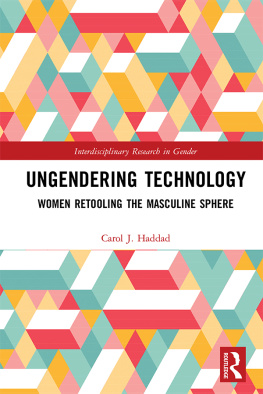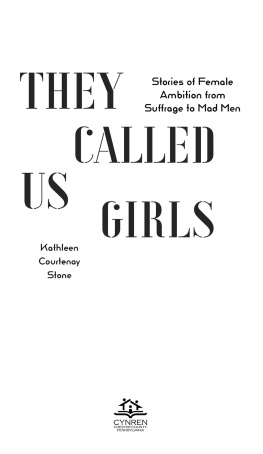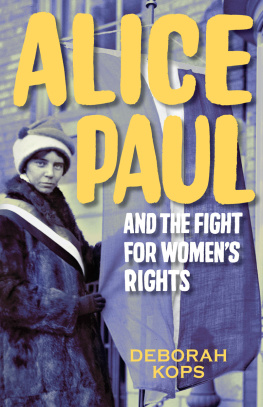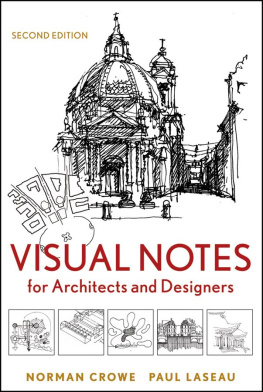A n inspiration for young people who love to design, build, and work with their hands, Women of Steel and Stone tells the stories of 22 female architects, engineers, and landscape designers from the 1800s to today. Engaging profiles based on historical research and firsthand interviews stress how childhood passions, perseverance, and creativity led these women to overcome challenges and break barriers to achieve great success in their professions.
Subjects include Marion Mahony Griffin, who worked alongside Frank Lloyd Wright to establish his distinctive architectural-drawing style; Emily Warren Roebling, who, after her husband fell ill, took over the duties of chief engineer on the Brooklyn Bridge project; Marian Cruger Coffin, a landscape architect who designed estates of Gilded Age mansions; Zaha Hadid, one of todays best-known architects and the first woman to receive the prestigious Pritzker Architecture Prize; and many others.
Practical information such as lists of top schools in each field; descriptions of specific areas of study and required degrees; and lists of programs for kids and teens, places to visit, and professional organizations, make this an invaluable resource for students, parents, and teachers alike.
Copyright 2014 by Anna M. Lewis
All rights reserved
First edition
Published by Chicago Review Press, Incorporated
814 North Franklin Street
Chicago, Illinois 60610
ISBN 978-1-61374-508-3
Library of Congress Cataloging-in-Publication Data
Lewis, Anna M.
Women of steel and stone : 22 inspirational architects, engineers, and landscape designers / Anna M. Lewis. First edition.
pages cm (Women of action)
Summary: Reporting on a range of historical and contemporary female builders and designers, this educational book strives to inspire a new generation of girls in the disciplines of science, technology, engineering, and math. With many of the profiles set against the backdrop of such landmark events as the womens suffrage and civil rights movements and the Industrial Revolution, and with original interviews from a number of current architects and engineers, this book provides inspiration and advice directly to young women by highlighting positive examples of how a strong work ethic, perseverance, and creativity can overcome lifes obstacles. Each profile focuses on the strengths, passions, and interests each woman had growing up; where those traits took them; and what they achieved. Sidebars on related topics, source notes, and a bibliography make this an invaluable resource for further study Provided by publisher.
Includes bibliographical references and index.
ISBN 978-1-61374-508-3 (hardback)
1. Women architectsBiographyJuvenile literature. 2. Women engineers BiographyJuvenile literature. 3. Women landscape architectsBiography Juvenile literature. 4. WomenVocational guidanceJuvenile literature. I. Title.
NA1997.L49 2014
720.9252dc23
[B]
2013027049
Cover and interior design: Sarah Olson
Printed in the United States of America
5 4 3 2 1
To my dear husband, Robert; my wildly creative children, Emily, Hayden, and Everett; and my forever friendsthanks for holding my hand along the way.
To my father, a consulting engineer for over 50 years, who passed the day before I started writing this bookyou would have loved to read it.
And, to all the women profiled in these pages who didnt listen to No and pursued their passions. Heres to the women who shaped our world, and those who will build our future.
Every great dream begins with a dreamer. Always remember, you have within you the strength, the patience, and the passion to reach for the stars to change the world.
Harriet Tubman
What would life be if we had no courage to attempt anything?
Vincent van Gogh
CONTENTS
Index
INTRODUCTION
THE WOMEN WHO helped build the world we live infemale architects, engineers, and landscape architectshad strong wills that helped them break through into professions at a time when women were not welcome or sometimes were not even allowed. These women had strengths, passions, and interests as they were growing up that led them to accomplish amazing achievements. They were all determined women who wanted to create, whether it was a building, a bridge, or a beautiful environment. Most of these spirited women saw the problems they faced entering male-dominated fields more as stumbling blocks or challenges than as outright discrimination. With a few exceptions, the support of their families helped them reach their goals. The womens suffrage (right to vote) movement, the civil rights movement, social reform, Americas industrial leaders, and the Roaring Twenties all influenced their diverse life stories.
Women have always played an important role in the creation of houses and buildings. In the hunter-gatherer days, women tended to the home while men went off to hunt. From teepee to cave to log cabin, women have always worked to create safe, nurturing, and healthy environments for their families and communities, and there is early evidence that shows women assuming the role of builder. In 16th-century France, Katherine Brionnet designed and supervised the building of the Chateau de Chenonceau between 1513 and 1524, while her husband was away fighting at war. In 17th-century England, 19-year-old Lady Elizabeth Wilbraham traveled and studied architecture in the Netherlands and Italy while on her honeymoon. She later set up an architectural office and designed Wotton House in Buckinghamshire and possibly 400 other buildings. Sir Christopher Wren, now known as Englands greatest architect, may have studied under her and created 18 churches with the help of her designs before he went on to build more than 50 churches, including St. Pauls Cathedral in London.
In Families and Farmhouses in Nineteenth-Century America, author Sally McMurry presents many home plans designed by women which were published in 19th-century farm journals. The 1847 house plan by Matilda Howard of Zanesville, Ohio, won the $20 prize from the Committee on Farm Dwellings for the New York State Agricultural Society. Mrs. Howards design provided detailed instructions on site and room placement, materials, and cost. Mrs. Howard explained, In the construction of this plan, it has been my object to combine utility and beauty, as far as practicable with the labor-saving principle.
After Harriet Beecher Stowe wrote Uncle Toms Cabin in 1852, she and her sister, Catharine, wrote The American Womans Home in 1869. Their book lays out the domestic concerns of the 19th century and details a house plan with particular attention paid to areas often ignored by male designers of the 19th century, such as the kitchen. Various chapters concern the need for exercise, both physical and mental, fresh air, gardening, hygiene, clothing reform/removing binding corsets, and the ventilation and heating of the home.
In the late 19th century, women from middle-income families (if they worked outside the home) were typically expected to enter nursing, teaching, or writing professions. In her popular self-help book What Can a Woman Do?, Mrs. M. L. Rayne wrote about the careers that were socially acceptable for a woman. They included medicine, law, agriculture, manufacturing, business, dressmaking, education, and the arts. Careers in architecture, engineering, and landscape architecture were not mentioned. Women from wealthy families were told to use their extra energies by doing charity work. The medical community in 1900 even gave excess energy and overuses of intellect a name: neurasthenia, or nervousness.
The neurasthenia cure for men was to send them out west to rope cattle, hunt, and hang out with cowboys. A few men who went west for the cure were writer Mark Twain, painter Thomas Eakins, and Theodore Roosevelt. Meanwhile, the cure for women was for private doctors to seclude them, possibly in bed, with no visitors, no books, and a bland diet. This was the prescription for reformer Jane Addams and writer Edith Wharton.
Next page
